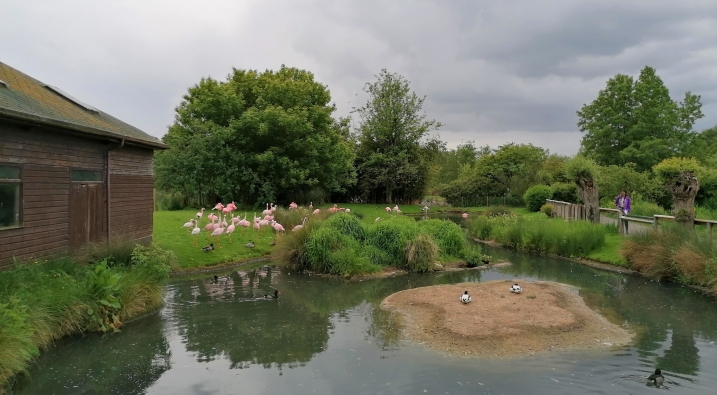Ten years of flamingo friends
WWT has a long standing research theme investigating the social lives of the flamingos in our care. Across all six species, we have collected data on their likes and dislikes, their personalities and differences in activity. We have looked at how colour, flock size and even the different ways that they feed on their flamingo influence their social behaviour.
The “flamingo friends” project, or more professionally The Flamingo Welfare & Behaviour Project started in 2012 as a collaboration between the Centre for Research in Animal Behaviour in the Psychology Department of the University of Exeter and WWT. Flamingos are one of the world’s most popular zoo animals and a familiar, instantly recognisable bird to many. However in spite of this star quality, many aspects of the flamingo’s biology and their lives in the wild remained poorly understood. Why, for example, do they live in such huge flocks? Is this because of environmental limitations? They have to all be in the same place because that is the only location for the right feeding and breeding resources? Is it because they feel safer when they live in big flocks? Is it because they enjoy each other’s company and have an underlying psychological need to live with other birds?
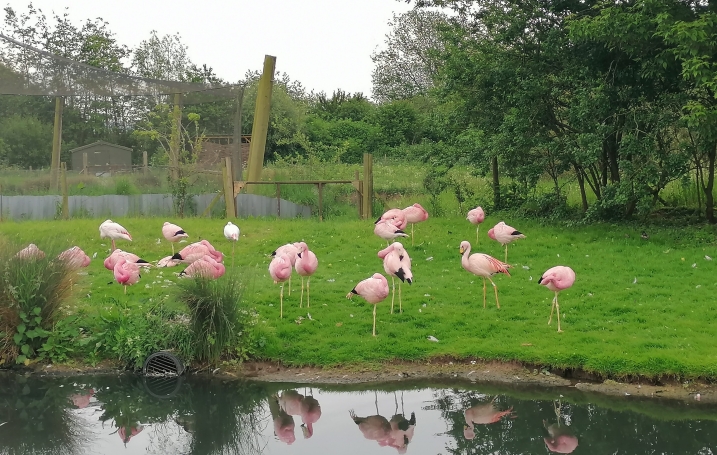
We’ve also looked at their behaviour across the full 24hour period. What do they get up to overnight when the watchful eyes of their keepers and the visiting public have all gone home? It turns out that flamingos are really rather busy when the sun goes down, with lots of feeding and foraging occurring later in the evening and in the hour of the early morning too. This first piece of research used the greater flamingo flock at WWT Slimbridge and we have rolled this out to other species too- look after for results in the future!
Some of the flamingo’s most characteristic and eye-catching behaviours are their courtship displays. The flock-wide dance moves that birds use to attract a mate. Whilst the mechanism (i.e. the factors from the environment that mean birds display at specific times) for the causation (how the display starts) and control (how long it goes on for and why it occurs) are understood, the actual choosing of one flamingo by another – who wants to breed with whom because of what characteristics and the actual selection of each other from all of the dancing birds in the group – is unknown.
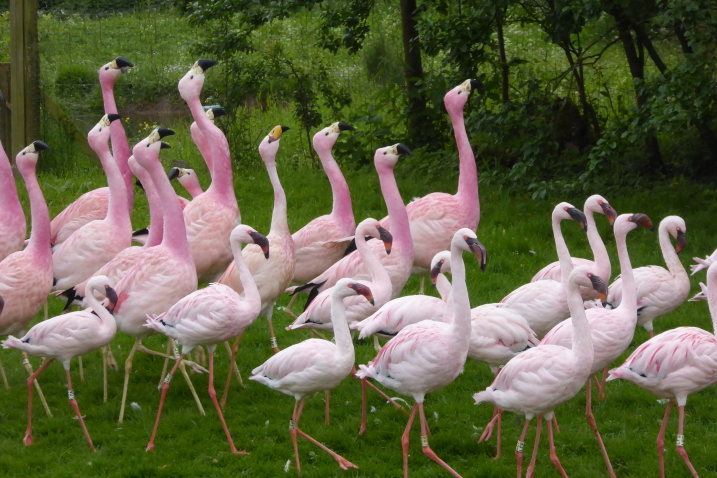
Ten years later we are trying to understand some of these “unknowns” and for the first time since the Covid-19 pandemic, we have MSc students back at Slimbridge collecting behavioural data on the animals in the living collection. MSc Animal Behaviour student Deeksha is spending her spring and summer observing the lesser and Andean flamingos, recording who is spending time with whom to see the same partnerships and affiliations recorded in 2012 still hold true in 2022. She is also collecting information on the bird’s characteristics too; for example their plumage colour, their personality and their involvement in any courtship display. This might give us an idea of why some birds like to be the best of friends and why they keep themselves apart from other birds in their flock.
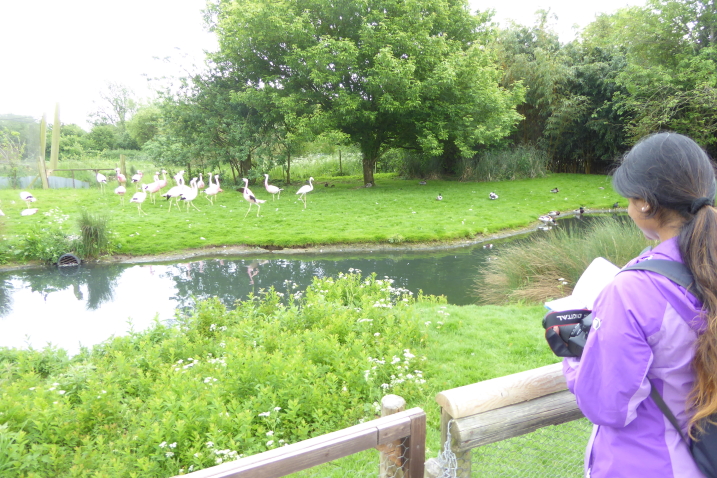
It is likely that there are many reasons as to why the flamingos choose who to spend time with so specifically. And comparison of these two species is interesting because of their different ecologies. They both now live in the same environment (the lesser flamingos moved in with the Andean flamingos in the autumn of 2021) and so we can control for any influence of environment on social choice (i.e. it’s the same for all birds so any difference in housing and how this impacts on flamingo friends can be ruled out). In the wild, the lesser flamingo lives in enormous flocks – in some parts of its wild range these flocks can be over one million birds – whereas the Andean flamingo lives in smaller groups, still of many individual flamingos but smaller when compared to the lesser flamingo. Does this difference in ecology affect their predisposition for being friends with other birds? From the data that was gathered back in 2012, the lesser flamingo flock has the weakest pattern of “best friends” within the group. Out of each flock studied, these flamingos were the most likely to hang out without whoever was nearby. Contrastingly, individual Andean flamingos were really keen to spend time with other specific birds in their flock – sometimes this was over 90% of a bird’s time was spent with one other flamingo – so it will be interesting to see what remains true today.
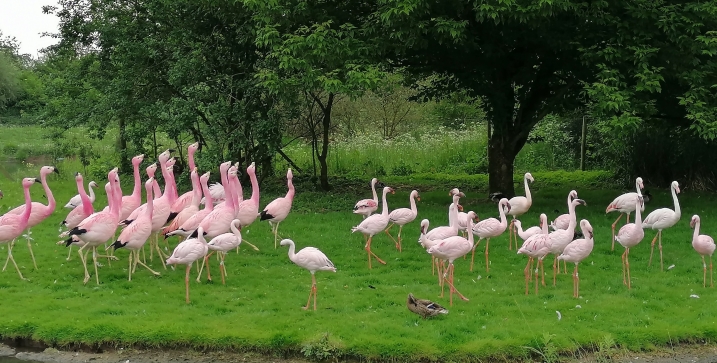
The Andean flamingos and the lesser flamingos have also lived in their respective groups for a long time. The lesser flamingos arrived in 1961 and the Andean flamingos from 1962. And whilst there have been a few additions and losses over the years, these flocks have remained relatively stable. They are likely to be very familiar with the other birds around them. The biggest adjustment to their social environment is probably the housing of both of these species together in the same enclosure. Not that change is new to these flamingos. The Andean flamingos have lived with the Chilean flamingos in the past, and the lesser flamingos have moved house several times. They also use to live in the greater flamingo enclosure in the summer, before this was altered to create Flamingo Lagoon.
Find out later this year, in a future Flamingo Diary piece, once Deeksha has completed her studies and gathered all of the results from her observations, what flamingo friends looks like ten years later. And potentially, what characteristics birds use to determine who likes to be friends with whom.
